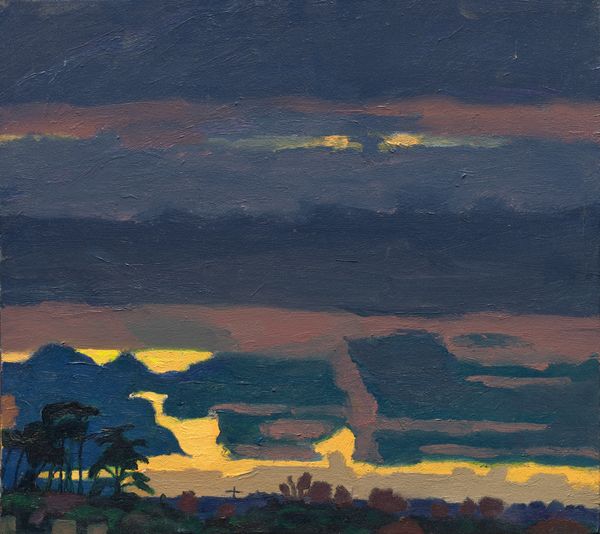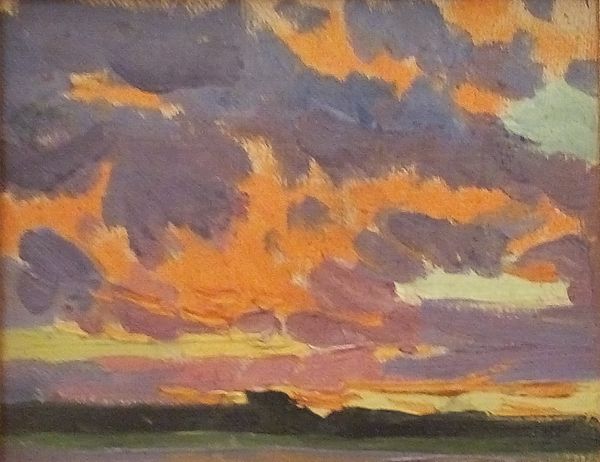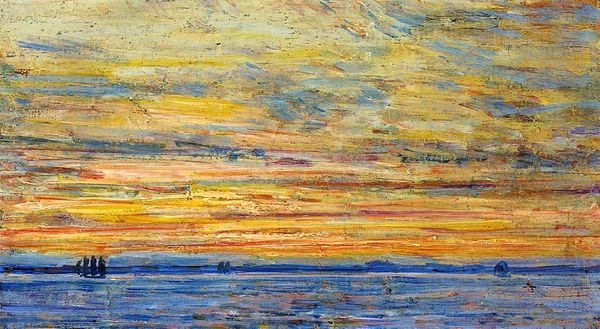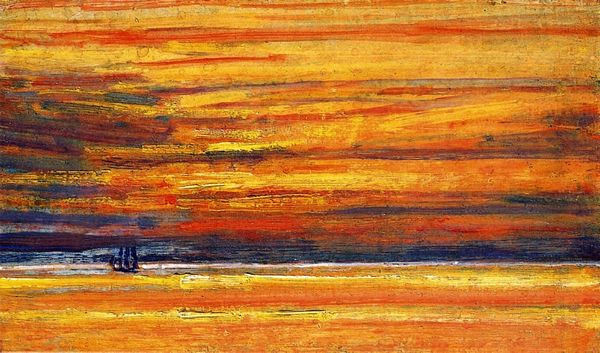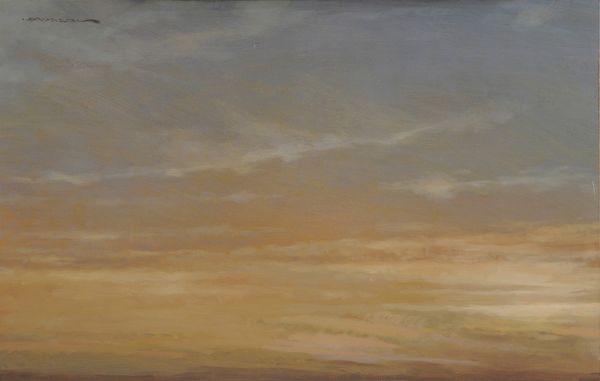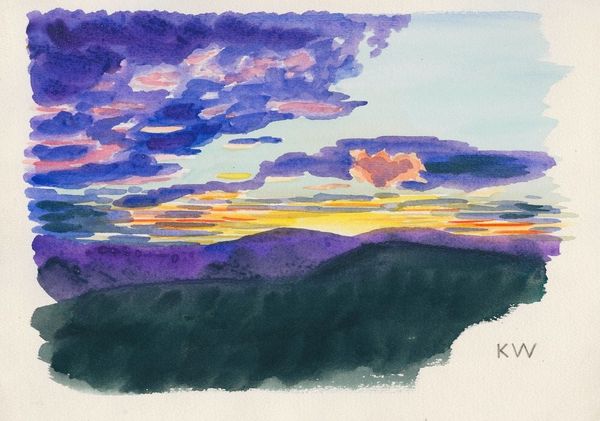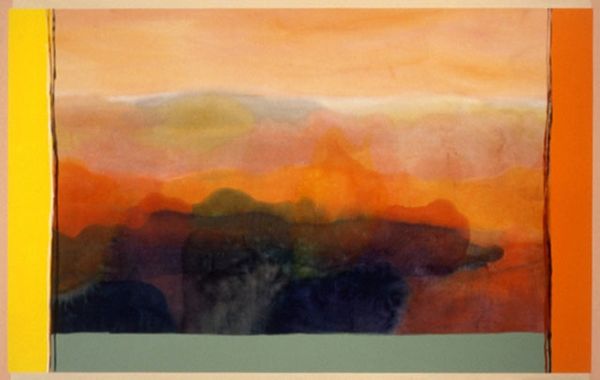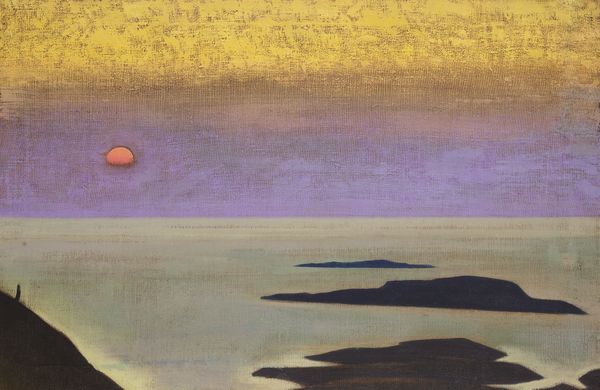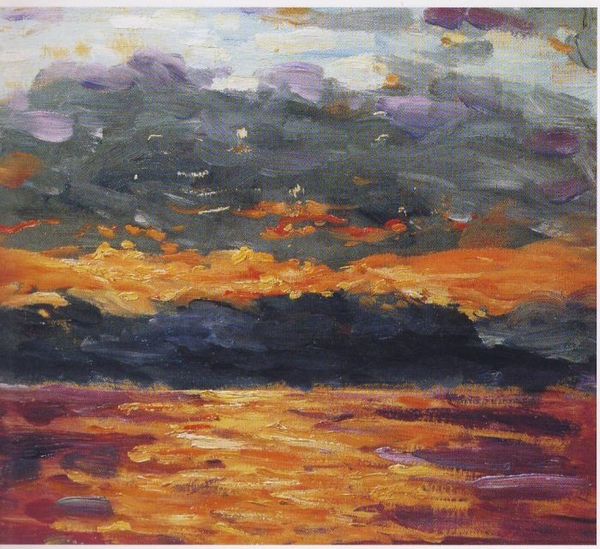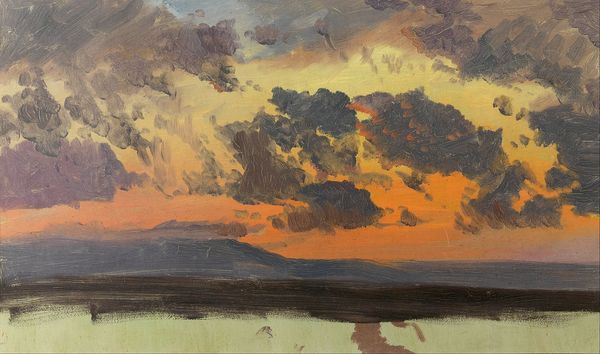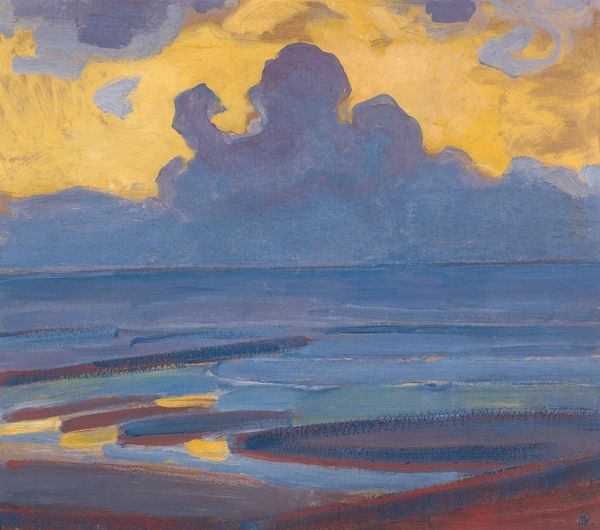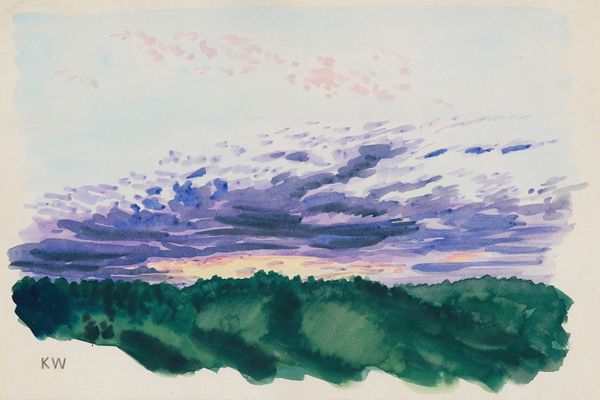
Copyright: Public Domain: Artvee
Curator: Looking at this canvas by Léon Spilliaert, painted in 1921, the title suggests something quite specific: *L'Eclair Vert Sur La Mer,* or "The Green Flash Over the Sea." Editor: My first thought is less about specificity and more about a generalized sense of sublime disquiet. There's a tension in the blocks of muted colour and the harsh horizontals – almost like visual static. Curator: Interesting, yes, there's that anxiety simmering beneath the surface. The green flash itself, that optical phenomenon where a green spot appears just above the sun, it's a potent symbol. For centuries it has signified hope, and even invincibility. Editor: And yet, here, the color scheme is hardly uplifting, quite subdued actually. The brushstrokes aren't blended, which contributes to a rather unsettling atmosphere. The composition rejects traditional perspective, resulting in flattened space. Curator: Absolutely, the traditional understanding of the green flash promises clarity, but Spilliaert presents us with a haziness, an obfuscation. Considering the rise of anxieties surrounding modernity at the time, the work certainly plays into that psychological landscape. Editor: You can also track this modern feeling through the handling of oil paint. He forgoes traditional glazing techniques for direct, expressive marks. There’s something deeply evocative about how those color blocks meet. It speaks of discord, or maybe unresolved questions. Curator: The painting technique and the romantic-era iconography merge with an almost expressionistic bent, creating this sense of internalized chaos. The flash of green might represent the quicksilver, ephemeral quality of hope, flickering on a dark horizon. It becomes almost a mocking symbol. Editor: A very contemporary, critical reinterpretation of romanticism perhaps, in which form perfectly aligns with meaning. It avoids sentimentality by destabilizing our conventional means of seeing a landscape. It feels raw. Curator: Exactly. It moves beyond a simple landscape to a psychological state rendered visible. Spilliaert offers more than just an image of the sea—he offers a mirror reflecting the anxieties of a generation. Editor: It’s a work that reveals itself slowly. A stark beauty arises from the controlled dissonance of its formal choices, mirroring the anxieties you've highlighted. A deeply affecting picture.
Comments
No comments
Be the first to comment and join the conversation on the ultimate creative platform.

